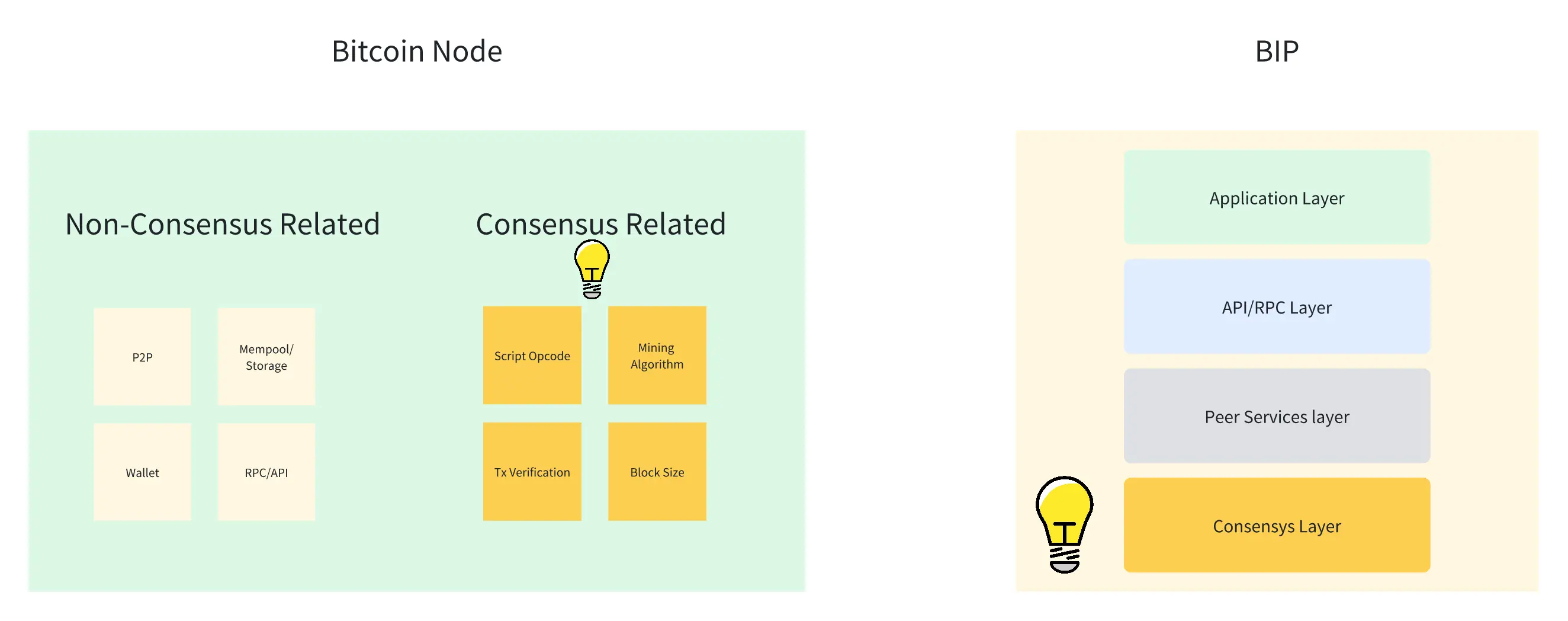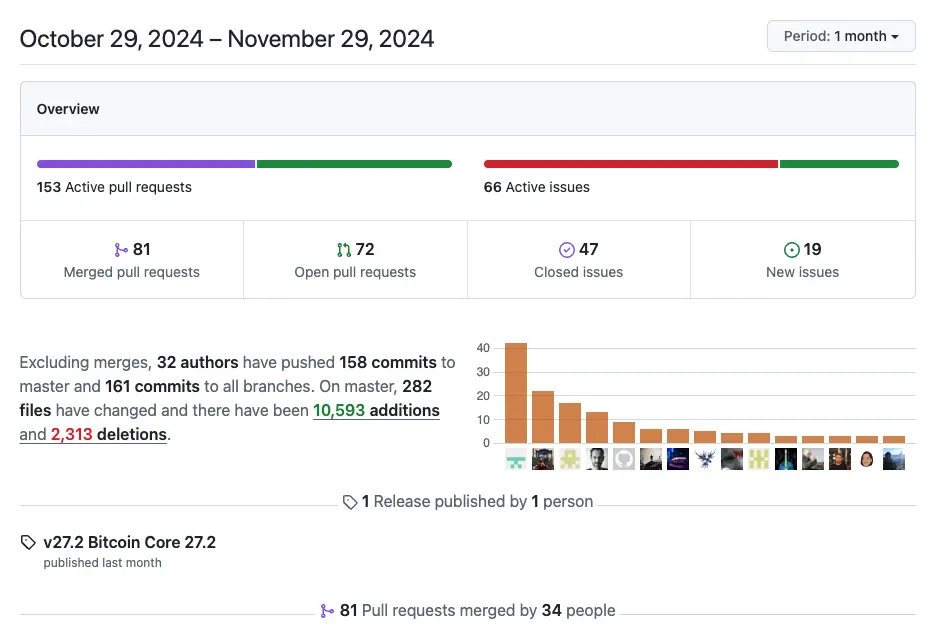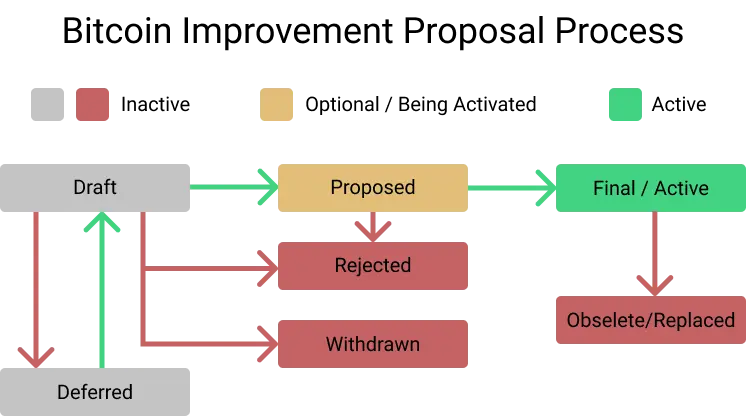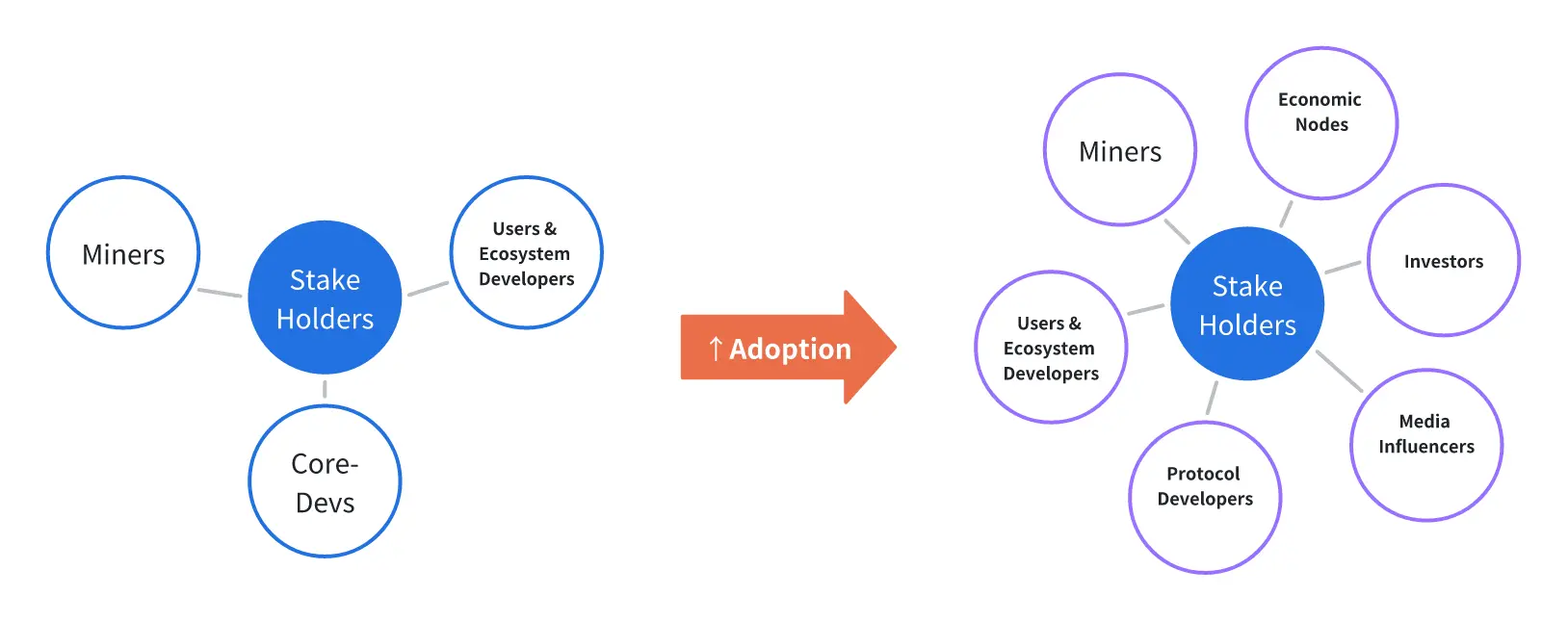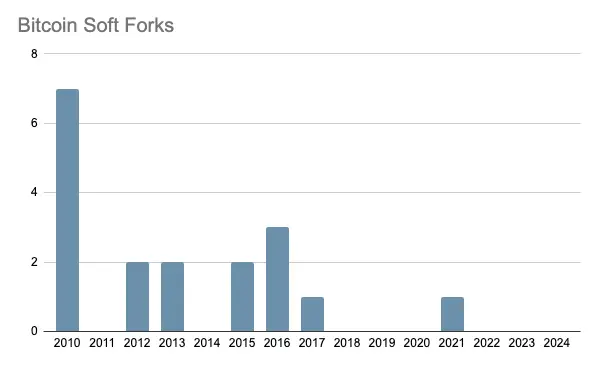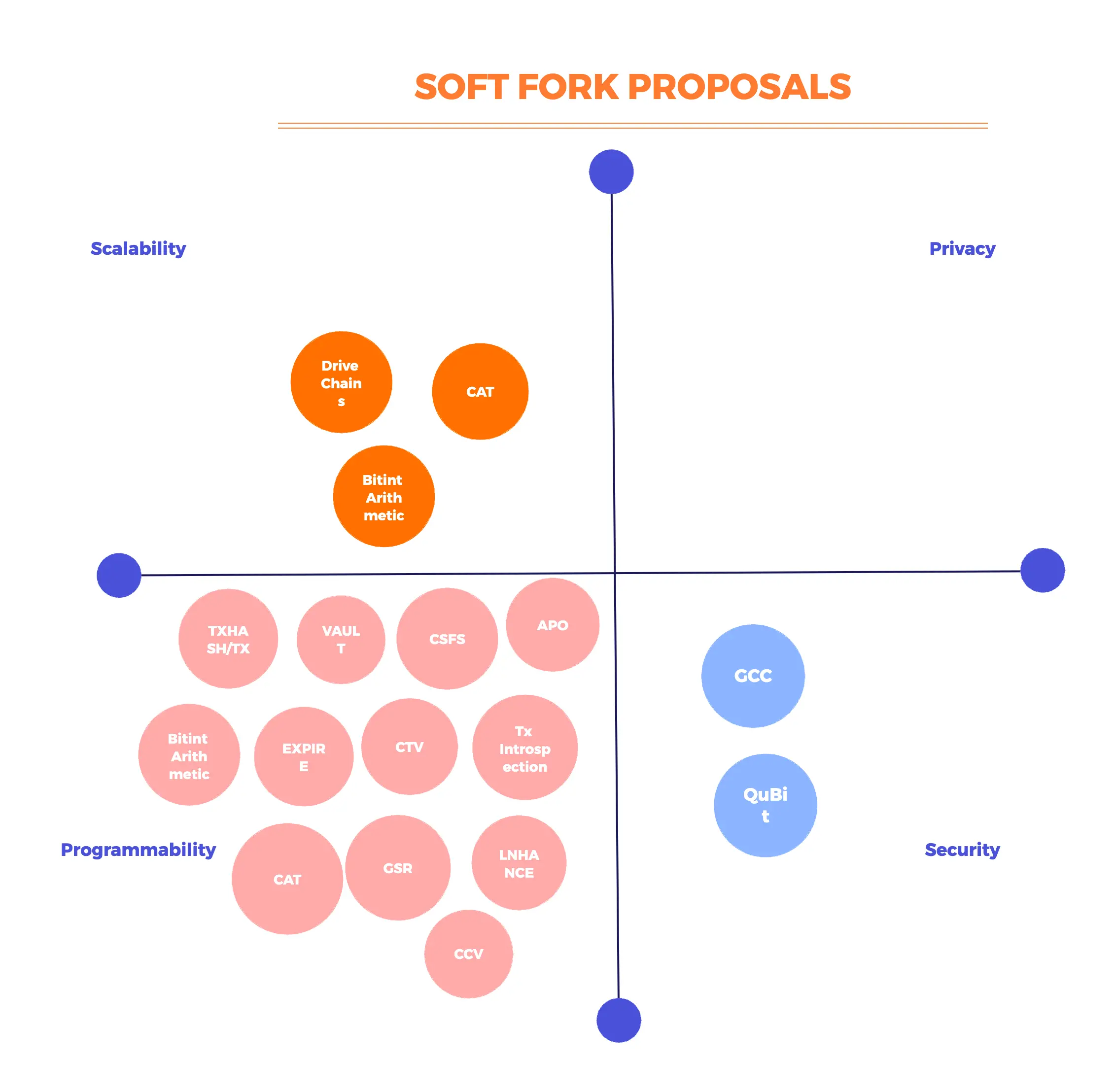Introduction
The topic of Bitcoin's next upgrade has been a constant discussion, yet as of now (DEC-2024), the community has not reached a consensus on whether to upgrade, the issues that need to be addressed by the upgrade, or the functionalities it should bring. Essentially, there are conflicting opinions, resembling a political deadlock.
In this stalemate, several interesting phenomena have emerged:
- Some community members actively promote the upgrade, driven by information asymmetry or commercial interests, with certain members frequently mentioning specific opcodes, and some projects relying on "potential" opcodes.
- A considerable number of pragmatic ecosystem developers have done extensive cryptographic and engineering work based on the premise of not upgrading the protocol, aiming to expand Bitcoin's potential.
- There are also numerous voices advocating for slow upgrades or opposing upgrades altogether.
These phenomena indicate that the topic of upgrades is quite popular in the Bitcoin community, but they also reflect that a significant portion of community members lacks understanding of the complete process of a Bitcoin upgrade and the role of innovative cryptographic tools in realizing Bitcoin's potential. The core purpose of this article is to break this information asymmetry, bringing everyone's information to the same level for deeper discussions.
This article will define Bitcoin upgrades, summarize certain patterns by tracing history, analyze current upgrade proposals and potential alternatives, and finally provide readers with several takeaways. The intention is to present this information so that readers can grasp the concepts, history, and progress of Bitcoin upgrades, laying the groundwork for further discussions on the topic and paving the way for the eventual formation of community consensus.
This article strives to present facts, while the author, as a Bitcoin ecosystem developer, hopes for more possibilities for Bitcoin. Therefore, the author will express clear opinions on certain topics, and readers are advised to discern these viewpoints.
Upgrade Overview: What and Why
What is a Bitcoin Upgrade
The Bitcoin white paper defines a protocol composed of thousands of nodes that follow the Bitcoin protocol, forming the Bitcoin blockchain network.
There are many versions of the protocol implementation (commonly referred to as clients). According to the data source from https://bitnodes.io/nodes/, the client with the largest market share is Bitcoin Core, thus the code maintainers of Bitcoin Core (hereinafter referred to as Bitcoin-Core-Devs) hold significant influence in the Bitcoin ecosystem.
Bitcoin node software consists of multiple modules, and relevant upgrade proposals for Bitcoin are defined by BIP (Bitcoin Improvement Proposal), which have been categorized in several ways.
Typically, when people discuss Bitcoin upgrades, they are generally referring to "consensus protocol upgrades." Since consensus protocol upgrades require a majority of nodes across the network to reach a consensus (otherwise, it may lead to a fork), they need to be approached with particular caution. As shown in the figure below, the modules related to the consensus protocol in the Bitcoin system and the proposals related to the consensus layer of BIPs are particularly noteworthy.
In fact, according to the statistics from the Bitcoin GitHub repository, modifications are very active, and since most changes are not related to the consensus protocol, they have not attracted widespread attention.
Types of Consensus Protocol Upgrades
According to the definition in BIP-123, consensus protocol upgrades are mainly divided into soft forks and hard forks.

Additionally, there is a less intuitive but interesting way to interpret and compare them:
Soft fork: Adding/strengthening rules (imagine adding a new feature, such as supporting taproot addresses)
Hard fork: Removing/relaxing rules (imagine removing a restriction, such as lifting the block reward limit)
BIP and the Soft Fork Process
The first two successful consensus protocol upgrades (Taproot/SegWit) used the soft fork method, allowing upgrades without causing significant community splits. This article focuses on soft forks, which upgrade while remaining compatible with older software versions.
After a BIP proposal is submitted, the process generally follows the flow illustrated below:
Source: https://river.com/learn/what-is-a-bitcoin-improvement-proposal-bip/
Typically, a soft fork proposal will aggregate multiple BIPs; for example, Taproot includes three BIPs:
Looking back at the timeline for the Taproot upgrade:
Source: Kraken Intelligence, GitHub, CoinDesk, https://www.argoblockchain.com/articles/bitcoin-taproot-upgrade-explained
The milestones in the Taproot soft fork phase include:
- The corresponding BIP is proposed, and the implementation plan is reviewed.
- Bitcoin-Core code maintainers initiate a GitHub pull request for the upgrade.
- Bitcoin-Core code maintainers review and merge the GitHub pull request, deciding on the activation method.
- A new version of the Bitcoin-Core code is released.
- Miners vote on-chain to approve the block height for BIP activation.
- The block height reaches the agreed height, completing the upgrade.
It is important to note that this process is a retrospective summary, and there is no formal consensus on these milestones.
Throughout the process, the Bitcoin Development Mailing List plays a crucial role in consolidating consensus among various parties.
Why Upgrade
As mentioned at the beginning of the article, there are mainly three types of voices in the community regarding upgrades:
- Pro-upgrade faction: A large number of proposals have been put forward, which will be analyzed below.
- Pragmatic development faction: Based on the existing protocol, they have implemented Fraud Proof (BitVM and its extensions), function encryption (contracts and zk proofs implemented through Bitcoin PIPEs), and hash collisions (contracts implemented through ColliderScript).
- Status quo faction: They believe upgrades should be very slow and cautious (with a 10-year cycle) like TeamSlowAndSteady, and Ossifiers who argue against upgrades unless quantum attacks occur (reference).
The author has conducted a pros and cons analysis of updating versus not updating:

As a pragmatic Bitcoin ecosystem developer, the author believes that it is essential to fully explore Bitcoin's potential through cryptographic or engineering innovations within the existing protocol framework. Additionally, from the perspectives of "sustainability" and "adaptability," it is advisable to continue upgrading as needed, after thoroughly assessing the scope of impact and security risks.
In-depth Upgrade
Stakeholders in Upgrades
The Hong Kong Consensus in Bitcoin's history (signed at the Bitcoin Roundtable event in February 2016, reference) primarily involved:
- Bitcoin-Core-Devs
- Mining pools
- Users and ecosystem developers (mainly exchanges/chip manufacturers, etc.)
With the rapid increase in Bitcoin adoption, the stakeholders in Bitcoin upgrades have evolved from a simple tripartite structure to a more complex landscape, resembling a "Game of Thrones" scenario. For reference, see the report Analyzing Bitcoin Consensus: Risks in Protocol Upgrades.
Several roles here are worth highlighting:
- Economic Nodes: Mainly referring to mainstream CEX exchanges/payment institutions/custodians, their stance on soft forks determines what is considered legitimate Bitcoin and significantly impacts adoption rates.
- Investors: In the context of the global prevalence of Bitcoin strategies (EFT/institutional reserves/national reserves, etc.), the role of investors has become more complex.
- User & Ecosystem Developer: After the Taproot upgrade, the Bitcoin ecosystem has flourished, leading to the emergence of asset protocols like Ordinals and a large number of native applications/scaling protocols.
Some interesting conclusions about these roles include:
- Different stakeholders play different roles at different stages: For example, ecosystem developers are quite proactive about proposals, protocol developers frequently exercise review authority over BIPs, and mining pools and economic nodes have significant influence over activation.
- Different ecosystem developers tend to propose and support proposals related to their commercial interests.
History and Summary of Upgrades
According to public information, multiple soft fork upgrades have occurred since the launch of the Bitcoin network.
soft forks
Data source:
https://blog.bitmex.com/a-complete-history-of-bitcoins-consensus-forks-2022-update/
https://www.drivechain.info/media/slides/mit-2023.pdf
From the above image, some interesting conclusions can be drawn:
- The Bitcoin protocol has exhibited a certain rigidity, with the frequency of soft forks decreasing over time.
- The time required to reach consensus for upgrades is increasing.
Areas of Focus for Soft Forks
By analyzing past soft forks and the BIPs they included, the following areas of focus can be summarized:

What Constitutes a Good Upgrade Proposal
Based on the facts and analyses presented earlier, we attempt to define a good upgrade proposal:
- Adhere to Bitcoin's core positioning as a payment system: Bitcoin has a unique positioning.
- Achieve an elegant balance between application potential and associated risks: Making it appealing to most people, with no strong opposition.
- Appropriate scale of the upgrade: It should not be too simple (not worth the effort) nor too complex (difficult to promote).
- Reasonable timing: There needs to be a strong demand to address specific issues. For example, during the SegWit upgrade phase, scalability was a strong demand.
Outlook on Upgrades
Proposal Classification
The author has collected most of the active proposals and attempted to label them according to their areas of focus, placing them in a four-quadrant matrix for easier visualization by readers.
Points to note regarding the classification:
- The four areas of focus are not completely isolated; for example, BIPs that enhance programmability may also contribute to scalability to some extent.
- A proposal may have multiple areas of focus; for instance, OP_CAT itself enhances programmability, but it is more widely promoted because it aids in achieving validity rollup.
- The focus areas of a proposal require a certain level of "consensus" (which is inherently political); it is important to note that there is no single definition, as different participants may have different perspectives.
- The second diagram is not a coordinate system; it categorizes based on labels, and the attributes of the circles (size/position/color, etc.) do not have special significance.
proposal category-2
proposal category-1
Community Voices
From the above images, it can be seen that the community has a certain consensus on the issues that upgrades need to address, which can be categorized into two main areas related to the functionalities required by the payment system:
- Programmability: Enhancing the programming capabilities of UTXOs, such as covenant/vault/transaction introspection/conditional payments/script enhancements, etc.
- Scalability: For L2 scalability, the overall solutions are divided into on-chain verification and off-chain verification, both of which have some actively promoted proposals.
The Consensus Puzzle
The author believes that the Bitcoin community is trapped in a maze of consensus regarding the next upgrade for the following reasons:
- Rigidity: With a software system approaching $2T FDV, a significant portion of stakeholders tends to favor stability, with no party willing to bear the responsibility for accidents.
- Highly differentiated stakeholders: Different stakeholders have varying demands, and their roles can differ at different stages; governments have also become stakeholders.
- Inadequate governance mechanisms: As one of the earliest blockchains, Bitcoin lacks a well-developed governance mechanism; the community cannot reach a consensus on the activation methods for soft forks.
- The role of protocol developers is dynamically changing: Even though they may indeed veto some proposals, they cannot simply be characterized as conservative or progressive.
- Lack of urgency: The development of blockchain infrastructure is becoming increasingly mature, leading to a lack of strong demand for Bitcoin upgrades.
Summary & Takeaway
This article introduces the basic concepts of Bitcoin upgrades, conducts an in-depth analysis of historical upgrades, and finally looks forward to the active proposals for the next upgrade, summarizing the reasons for the current consensus puzzle.
After reviewing and looking ahead, it is believed that readers now have a certain understanding of the current state of upgrades, and several takeaways are summarized.
- Pragmatic development while steadily advancing upgrades, soft forks are more desirable.
- Stakeholder interests are highly differentiated, and the community tends to be conservative.
- Upgrades must be discussed under the premise of adhering to Bitcoin's core value positioning.
- Scalability is just one area of focus for upgrades.
- A better timing is needed; good upgrade proposals will quickly gain consensus.
- The community needs to explore better governance mechanisms.
Acknowledgments
During the research/writing/review process of this article, I received a lot of help, including from community members who preferred to remain anonymous while considering various factors, and I would like to thank them here.
It is worth noting: Considering that some viewpoints in the article carry personal preferences, the following acknowledgment list does not represent their complete agreement with the content of the article, and this article does not intend to involve these enthusiastic community members in any disputes.
- Co-editors and reviewers (in alphabetical order)
- Provided feedback and assistance (in alphabetical order)
Future Work
Throughout the process, the author found many issues worth exploring in depth, such as solutions for certain functionalities/research on specific proposals/data support for certain viewpoints, etc. The author will elaborate on these in subsequent articles in the series.
References
https://bitcoinops.org/
https://opnext.dev/
https://groups.google.com/g/bitcoindev
https://github.com/TABConf/6.tabconf.com
https://petertodd.org/2024/covenant-dependent-layer-2-review
https://blog.bitmex.com/a-complete-history-of-bitcoins-consensus-forks-2022-update/
https://blog.bitmex.com/bitcoins-consensus-forks/
https://github.com/bitcoin/bips/blob/master/bip-0123.mediawiki
https://river.com/learn/what-is-a-bitcoin-improvement-proposal-bip/
https://bitnodes.io/nodes/
https://github.com/bitcoin/bitcoin/pulse/monthly
https://river.com/learn/what-is-a-bitcoin-improvement-proposal-bip/
https://trustmachines.co/learn/bitcoin-taproot-upgrade-basic-breakdown/
https://www.argoblockchain.com/articles/bitcoin-taproot-upgrade-explained
https://medium.com/@bitcoinroundtable/bitcoin-roundtable-consensus-266d475a61ff
https://github.com/bitcoin-cap/bcap
https://newsletter.blockspacemedia.com/p/four-takeaways-from-op-next
https://blog.bitfinex.com/education/is-ossification-good-or-bad-for-bitcoin/
https://arxiv.org/abs/2305.04079
https://www.allocin.it/uploads/placeholder-bitcoin.pdf
https://eprint.iacr.org/2024/1802
https://en.bitcoin.it/wiki/Covenants_support
免责声明:本文章仅代表作者个人观点,不代表本平台的立场和观点。本文章仅供信息分享,不构成对任何人的任何投资建议。用户与作者之间的任何争议,与本平台无关。如网页中刊载的文章或图片涉及侵权,请提供相关的权利证明和身份证明发送邮件到support@aicoin.com,本平台相关工作人员将会进行核查。

